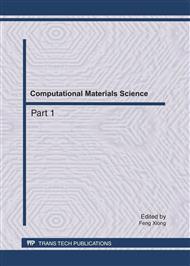p.280
p.286
p.292
p.297
p.303
p.309
p.316
p.322
p.326
An Available-to-Promise System for Network-Manufacturing
Abstract:
This Paper Presents Development of an Available-to-Promise (ATP) System for Network-Manufacturing in a Global Environment where Multi-Plants Are Manufacturing Products Collaboratively and Are Globally Networked. within the Multi-Plant Mode, the ATP Process Is Challenged to Give Not only Quick Response but Also Precise Order Promising by Considering the Coordination of Production Planning and Scheduling among Plants. in this Paper, an Order Decision and Production Planning Integrated ATP Model Was Developed and a Series of Performance Analysis Experiment Was Conducted to Reveal the Impact of some Key Factors such as Planning Horizon, Batch Interval Etc. on Overall Profit.
Info:
Periodical:
Pages:
303-308
Citation:
Online since:
July 2011
Authors:
Keywords:
Price:
Сopyright:
© 2011 Trans Tech Publications Ltd. All Rights Reserved
Share:
Citation:


